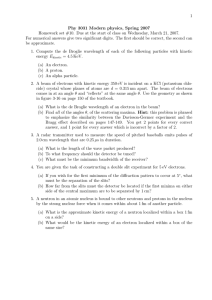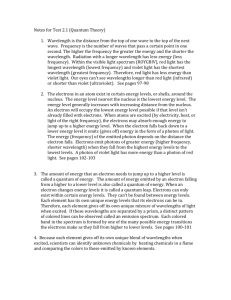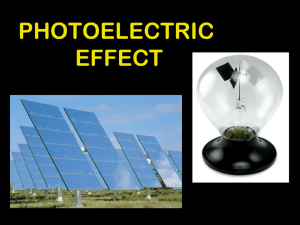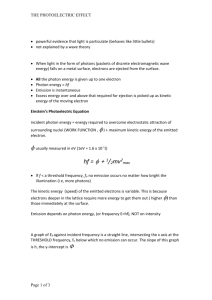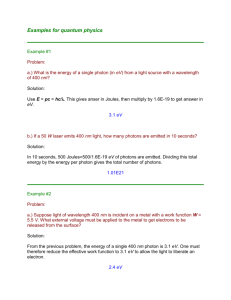Answersforphy
advertisement
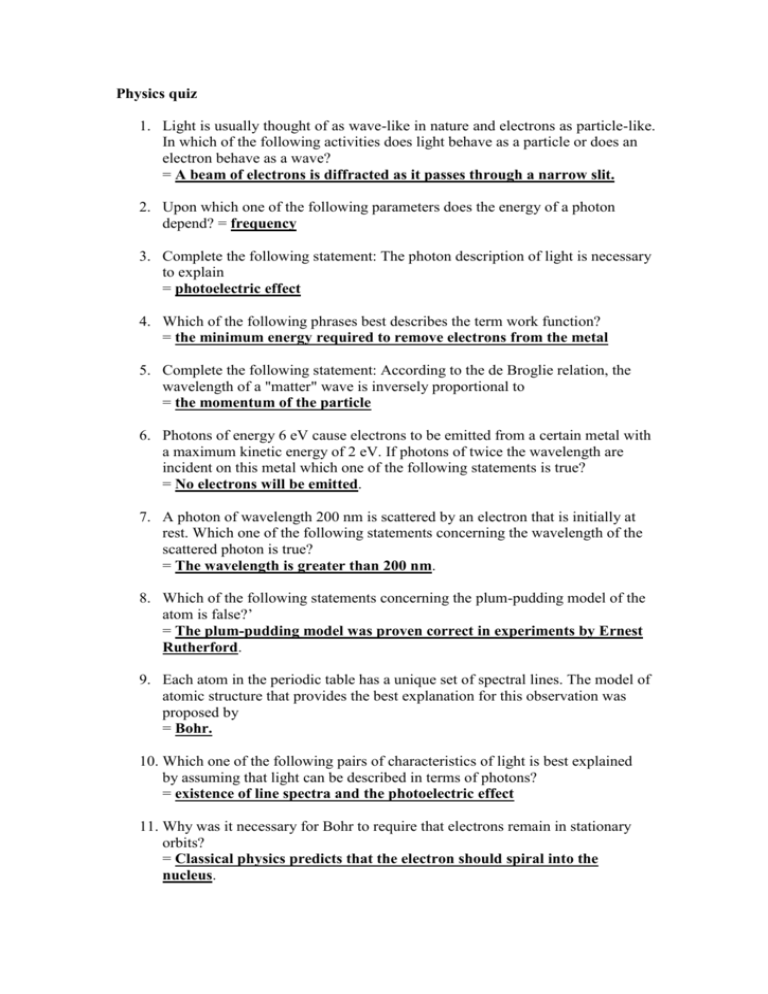
Physics quiz 1. Light is usually thought of as wave-like in nature and electrons as particle-like. In which of the following activities does light behave as a particle or does an electron behave as a wave? = A beam of electrons is diffracted as it passes through a narrow slit. 2. Upon which one of the following parameters does the energy of a photon depend? = frequency 3. Complete the following statement: The photon description of light is necessary to explain = photoelectric effect 4. Which of the following phrases best describes the term work function? = the minimum energy required to remove electrons from the metal 5. Complete the following statement: According to the de Broglie relation, the wavelength of a "matter" wave is inversely proportional to = the momentum of the particle 6. Photons of energy 6 eV cause electrons to be emitted from a certain metal with a maximum kinetic energy of 2 eV. If photons of twice the wavelength are incident on this metal which one of the following statements is true? = No electrons will be emitted. 7. A photon of wavelength 200 nm is scattered by an electron that is initially at rest. Which one of the following statements concerning the wavelength of the scattered photon is true? = The wavelength is greater than 200 nm. 8. Which of the following statements concerning the plum-pudding model of the atom is false?’ = The plum-pudding model was proven correct in experiments by Ernest Rutherford. 9. Each atom in the periodic table has a unique set of spectral lines. The model of atomic structure that provides the best explanation for this observation was proposed by = Bohr. 10. Which one of the following pairs of characteristics of light is best explained by assuming that light can be described in terms of photons? = existence of line spectra and the photoelectric effect 11. Why was it necessary for Bohr to require that electrons remain in stationary orbits? = Classical physics predicts that the electron should spiral into the nucleus. 12. An electron makes a transition from higher energy state to a lower one without any external provocation. As a result of the transition, a photon is emitted and moves in a random direction. What is the name of this emission process? = spontaneous emission 13. Which one of the following statements best explains why a neon sign does not emit visible light after it is turned off? = Most of the neon atoms are in the ground state. 14. Which one of the following statements concerning stable nuclei is true? = Stable nuclei generally have more neutrons than protons. 15. The binding energy of an isotope of chlorine is 298 MeV. What is the mass defect of this chlorine nucleus in atomic mass unit? Data: 1u = 931.5 MeV = ~0.320 u 16. Radiation or (and) particles emerge(s) from a radioactive sample. These products from the sample are allowed to pass through a narrow slit and may be considered a beam. The beam is passed between two plates that carry opposite electrical charge. The experimental region contains no magnetic fields. It is observed that the beam is deflected toward the negatively charged plate. Which of the following statements is the best conclusion for this situation? = The beam could be either alpha or positive beta rays.


